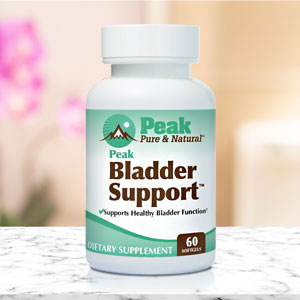Get Easy Health Digest™ in your inbox and don’t miss a thing when you subscribe today. Plus, get the free bonus report, Mother Nature’s Tips, Tricks and Remedies for Cholesterol, Blood Pressure & Blood Sugar as my way of saying welcome to the community!
Estrogen replacement methods and management

You may have recently made the decision to give hormone replacement therapy a try, specifically to replace estrogen lost to menopause.
There are several ways to replace low estrogen. Most importantly, it is administered via your skin somewhere, and not swallowed.
You may recall, taking even natural estrogen by mouth carries some health risks, as I mentioned last week. When you swallow estrogen, it is absorbed by your intestines and passes immediately via the portal vein to your liver for detoxification. It’s the unnatural metabolites of this that we worry about.
However, with creams and troches (mouth lozenges), it absorbs directly into your bloodstream and then directly to your target organs needing replacement.
I sometimes get a request for vaginal transdermal estrogen to build up tissue atrophy and reverse dryness. This can be done with both estrogen and testosterone. These hormones applied to genitalia will also have some systemic absorption and must be taken into account (if used consistently) when interpreting lab test values.
Reasons to add progesterone
Estrogen is usually taken along with progesterone in order to lower the otherwise increased risk of uterine cancer. As a quick aside, the other risk factors for endometrial (uterine) cancer include nulliparity (never been pregnant), early menarche, late menopause, polycystic ovarian syndrome, obesity since just adulthood, tamoxifen use, and a first-degree relative with uterine cancer.
Estrogen dosing can be tricky
The usual effective dose of an estrogen cream for menopausal symptoms is 1 to 5 mg daily. If there are no symptoms to reverse, then lower doses will usually work to bring estradiol blood levels back into the range of a 30-year-old woman (the goal). As with medication, less is best.
The timing of dosing is slightly trickier. For women who still have monthly periods, you can apply it days 5-25 of your menstrual cycle. This mimics the natural estrogen level rise during these days and avoids too much estrogen on days when it is usually low.
Better yet is if you are menopausal. If this is the case, then you don’t have periods, which makes it even easier. Simply apply estrogen and progesterone daily in a continuous fashion, rotating application sites to avoid skin sensitivity. Then, simply take a 3-5 day break every 3 months. These two medicines are usually put into one cream or troche for menopausal women.
Important lab testing
Your doctor who manages hormone replacement will know the tests needed to monitor your hormone levels. The easiest tests are taken from your blood. Saliva testing is another reliable method to follow your levels, but requires specialty labs.
The normal ranges for estradiol and progesterone are quite broad, and minor dose adjustments seem to still keep levels in the youthful range. Therefore, I often make large dose adjustments (increases by 50%-100%) if needed to block symptoms of menopause.
Here are the important labs related to estrogen and progesterone replacement. They should be drawn as needed — yearly at a minimum.
- Estradiol
- Progesterone
- Testosterone
- DHEA-S (dehydroepiandrosterone-sulfate)
- LH (Luteinizing Hormone) — only once
- FSH (Follicle Stimulating Hormone) — only once
- TSH (thyroid stimulating hormone)
How to find a practitioner who prescribes BHRT
There are relatively few doctors who have taken the extra training and know how to manage bio-identical hormone therapy (BHRT). Finding one in your area may not be so easy. However, the American Academy of Anti-Aging Medicine (A4M) provides a search engine for physicians who are trained in this.
All doctors I am aware of in my city of San Diego, CA do not accept insurance payments for such visits. One patient I met last week reported he was paying $200 per month for his testosterone replacement management. This included visits with the nurse, lab tests, and medicine. They required lab testing every 3 months, but I think that is far too excessive once the medicine dosages and hormone blood levels are fairly stabilized.
Editor’s note: Did you know that when you take your body from acid to alkaline you can boost your energy, lose weight, soothe digestion, avoid illness and achieve wellness? Click here to discover The Alkaline Secret to Ultimate Vitality and revive your life today!
Source:
- Endometrial Cancer Prevention (PDQ®) – Health Professional Version — National Cancer Institute














